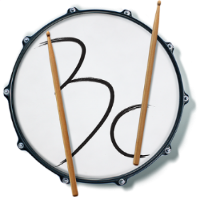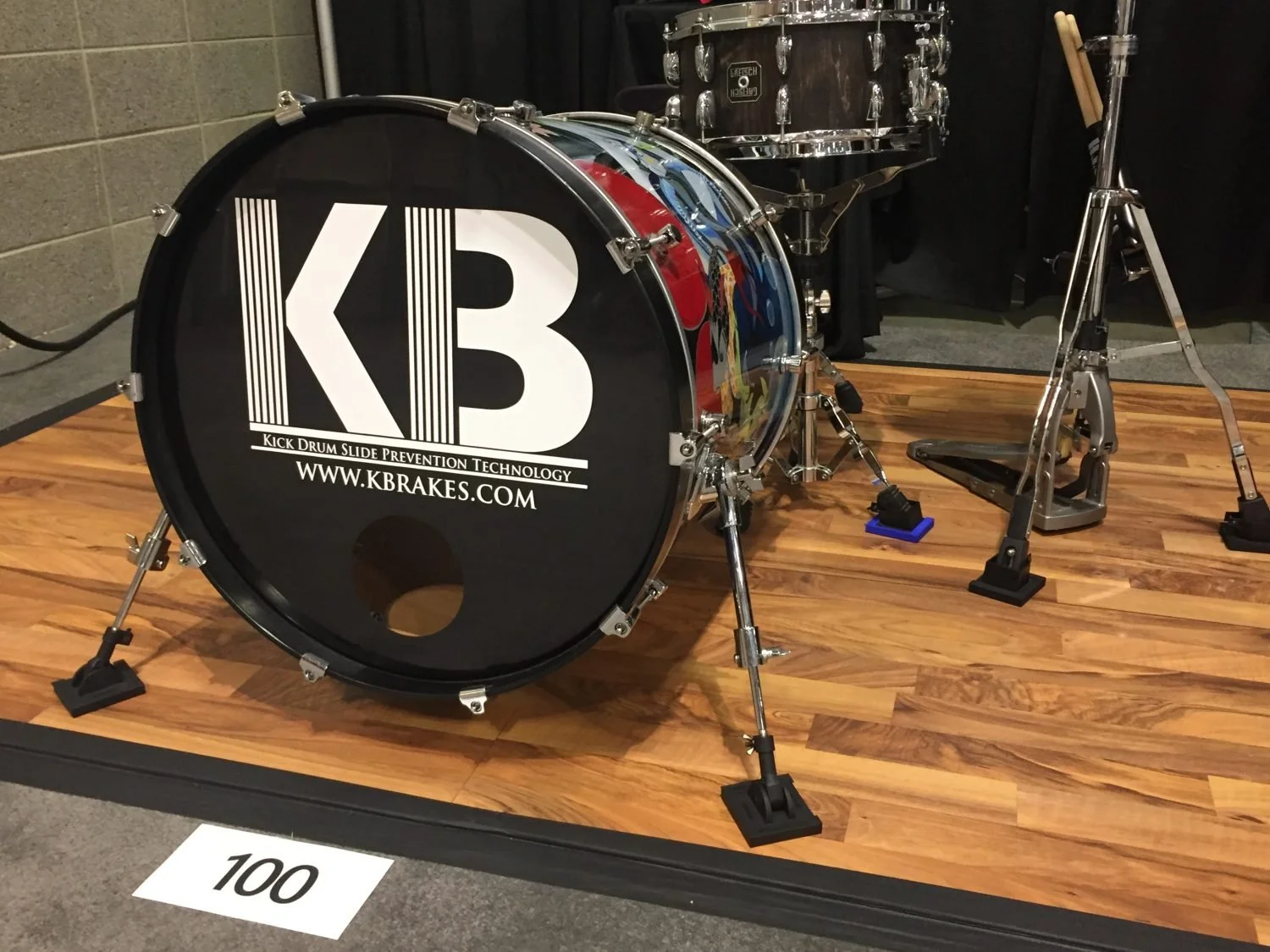Percussive Gizmos and Gadgets: Beyond the Major Brands
Most drummers are aware of the major drum manufacturers, such as Tama, Ludwig, DW, Pearl, Sonor, Gretsch, Yamaha, and a few others. Cymbal manufacturers, like Zildjian, Paiste, Sabian, Istanbul, and Meinl, also have near-universal brand recognition among drummers. But there are a slew of other companies and instrument builders that create all sorts of other innovative devices that drummers can use to further stylize their sound and way of playing.
Expanding the Sound Palette
Independent instrument builders seek to create totally unique sounds that can stand alone, or function as an expansion of the drum set. Below are some manufacturers that bring something new to drummers’ sonic arsenal.
Morfbeats
Founded in 2016, Morfbeats produces all sorts of metal percussion instruments including mini gongs, chimes, stacks, and bells. Each instrument is hand-built by brothers Adam and Austin Morford. The original creator, Adam, sought to create an acoustic instrument that could produce sounds that seem to be heavily effected and processed, but actually aren’t.
Their signature creation can best be described as a cowbell of doom, known as the Marvin. Named after Morford’s grandfather, the Marvin is pretty far from your standard cowbell. It’s equipped with numerous springs of various lengths and thicknesses that use the body of the instrument to resonate when struck. The resulting sound is truly one-of-a-kind: dark, metallic, and warm with a bit of a sizzle due to the springs. Users can strike the springs and body, run a stick across the springs, or even rub a stick or mallet across the body to create a somewhat horrifying drone. While the original Marvin is quite large and can function as a standalone instrument, Morfbeats also produces smaller versions of the instrument that function more as an addition to the drum set.
Beyond the Marvin models, Morfbeats also manufactures an array of other innovative percussive gadgets, such as springs welded to cup chimes, gong discs and strips, and modified sleigh bells (seen in the video below left). Dan Mayo has incorporated several Morfbeat products into his playing, which definitely gives him an unmistakably unique sound (below right).
Keplinger
Named after drummer, founder, and lead builder Gregg Keplinger, Keplinger produces snare drums, cymbals, and other percussion instruments from stainless steel. Stationed in Seattle, Keplinger began building snare drums toward the end of the 1980s after being inspired by the tone of a 1930s Ludwig steel snare drum. Since then, the brand has branched out to create all sorts of shakers, ching rings, and metallic jingly bits to augment the drum set. These accessories can be placed directly on top of drums and cymbals to add some tasty rattle to preexisting sounds.
While it appears almost everything is currently sold out on their website, it’s possible to find Keplinger instruments at certain drum shops around the country, including Drum Center in New Hampshire, or on used instrument boards, such as Reverb. The steel cymbals seem particularly interesting, since most cymbals are made from a bronze alloy. They have a really intriguing dark, washy tone that stands out compared to their traditional bronze counterparts.
Drum Tortillas
Have you ever wondered how funk drummers of the late 60s and throughout the 70s got their drums to have that delightful “thud” sound? It’s pretty simple, actually. They just laid towels over top of the drums to effectively muffle any resonance while maintaining some of the pitch. However, towels were prone to slipping off the drums and ripping from use. Drum Tortillas are specifically designed to fit snuggly over the surface of a drum. Hand-made by drummer and artist Mason Self, along with his wife Ginger, Drum Tortillas come in a variety of sizes and fabric patterns to help users customize the sound and the look of their drums.
While very effective at what they do, they recommend using Drum Tortillas for softer styles of playing and for drumming with mallets to prevent them from accidentally slipping out of place. As long as your sticks aren’t splintered at the tips, there’s no reason they shouldn’t last for years of use, especially if you’re not beating the heck out of them.
Big Fat Snare Drum
Another company that seeks to allow drummers to easily replicate the sound of 70s funk drumming, Big Fat Snare Drum offers a wide variety of products that simply lay on top of drum heads, which lowers the drum’s fundamental pitch and dampens unwanted resonance and overtones. Despite the company’s name, they make gear that works just as well on the toms. Their products come in an array of dimensions and models to allow for different levels of dampening on any drum. One of their most popular creations, known as Steve’s Donut, features a large circular cutout in the middle so drummers are still striking the actual drum head. The Donut should last practically forever since it doesn’t take an actual beating.
They also make dampeners with tambourine chimes attached around the perimeter, appropriately called the “snare-bourine," which give drums a jingle when they’re hit. Beyond their drum head-style products, the company also manufactures ching rings and jingly bits that can be mounted to cymbals or drums to add character to their sound.
Quality of Life Improvements
While the above manufacturers create products and instruments that alter or expand upon the sounds of a standard drum set, some gadgets seek to make the life of a drummer a bit easier. They may have a more subtle impact on the drums’ overall sound (or no impact at all), but they’re worth mentioning due to their effectiveness at accomplishing what they set out to do.
Spinbal
A brand with a more subtle effect than what’s been mentioned so far, Spinbal produces cymbal sleeves that contain a bearing, allowing mounted cymbals to freely spin for extended periods of time (potentially up to 10 minutes, depending on the size of the cymbal). Striking a spinning cymbal creates a shimmery, but subtle, vibrato effect. And quite simply, spinning cymbals look pretty cool.
An advantage of spinning cymbals is that every hit lands in a different spot, theoretically extending the life of the cymbal. Mounting a chain or some beads to the center of the stand (where the wing nut would go) allows users to create a persistent sizzling white noise. Drummers could also lightly hold a stick over a spinning cymbal to generate a persistent scraping sound, which would otherwise be nearly impossible to execute. While the product itself doesn’t directly impact a cymbal’s sound too much, it opens up different ways to use cymbals beyond just hitting them.
Moongels / Drumdots
A “must have” for any drummers that regularly gig and/or record, Moongels and Drumdots are small, sticky pads that are placed directly on drum heads. While the two brands are in direct competition with one another, they fill the same need. They’re effective at reducing unwanted overtones without completely killing resonance the way that Drum Tortillas and Big Fat Snare Drum products do.
Without significantly altering the fundamental pitch of a drum, they help users achieve a more focused sound by simply placing one (or more) at the edge of a drum head. They can also be placed on cymbals to slightly reduce their sustain, depending on where they’re placed. Sticking a Moongel or Drumdot closer to the center of a cymbal will have a more subtle effect, while sticking one closer to the edge will drastically cut a cymbal’s sustain. They’re bound to collect some dust and stick splinters over time, but are easily restored by washing with soap and water.
KBrakes
If you’ve been playing the drums for a while, you’ve likely encountered a bass drum that tends to drift away from you with each kick. Whether the bass drum isn’t on a rug or it lacks spurs to catch the rug/carpet, KBrakes are the solution. They mount to the legs of a bass drum and prevent it from moving, no matter how heavy your kick foot is.
They make different models that are best suited to different surfaces. Some are best for anchoring the kick to carpet or soft surfaces, while others are designed for gripping hard floors. They greatly increase the surface area of the bass drum feet, which makes a huge difference in keeping kick drums in place. KBrakes also makes products to keep hihat stands and cymbal stands stationary, potentially removing the need for a dedicated drum rug altogether.
Since the drum set itself was an innovation of necessity, it only makes sense that people continue to expand upon its capabilities and functionality. Some of these currently lesser-known brands may someday end up as an essential part of the drumming realm. Do you have any ideas to improve or expand upon the drum set? If so, you should attempt to see them through, even if it’s just a raw prototype. You might be the creator of the next “big thing” in drumming!


